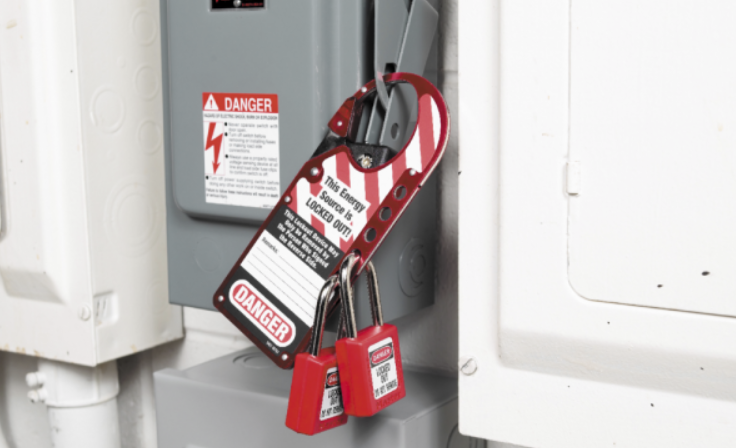Is Lock Out Tag Out Required By Law?

Lockout-Tagout (LOTO) may sound like a technical term reserved for safety manuals, but its implications reach far beyond just paperwork. Imagine a world where machinery operates without proper safeguards—this is not only dangerous, it’s also illegal in many scenarios. The question arises: Is lock out tag out required by law? Understanding the answer could mean the difference between life and death in your workplace.
As accidents related to hazardous energy continue to occur across various industries, knowing about LOTO becomes essential for both employers and employees. Let’s dive into what LOTO really means and why it’s crucial for maintaining safety standards on job sites everywhere.
Understanding the Lockout-Tagout (LOTO) Standard
The Lockout-Tagout (LOTO) standard is a critical safety protocol designed to protect workers from unexpected machine start-ups or the release of hazardous energy during maintenance and servicing activities. At its core, LOTO involves two main actions: locking out equipment to prevent operation and tagging it to inform others that work is being done.
When a machine is locked out, only authorized personnel can access its controls. This ensures that no one accidentally turns on the equipment while someone else is working on it. The law tags act as visual warnings, notifying everyone in the area about ongoing maintenance tasks.
Various industries adopt these practices, but the principles remain consistent across all sectors. Understanding this standard helps foster a culture of safety where employees feel secure while performing their jobs. Emphasizing compliance with LOTO not only protects individuals but also enhances overall workplace productivity by reducing downtime associated with accidents.
The Importance of LOTO in Workplace Safety
Lockout-Tagout (LOTO) is a crucial component of workplace safety. It prevents accidental machinery startup during maintenance or repair work. This simple yet effective procedure safeguards employees from severe injuries.
When equipment unexpectedly starts, the consequences can be devastating. LOTO ensures that machines are properly shut down and secured before anyone interacts with them. The implementation of this protocol protects workers’ lives and well-being.
Beyond individual safety, LOTO fosters a culture of responsibility within organizations. Employees become more aware of potential hazards, leading to greater vigilance in their daily tasks. This heightened awareness contributes to an overall safer working environment.
Moreover, adherence to LOTO standards can reduce costly accidents and downtime for businesses. Investing in proper training and compliance not only protects workers but also enhances operational efficiency.
Creating a safe workplace should always be a priority—implementing Lockout-Tagout procedures is one essential step toward achieving that goal.
OSHA Regulations on LOTO
The Occupational Safety and Health Administration (OSHA) has established clear regulations regarding Lockout-Tagout (LOTO). These guidelines are vital for ensuring worker safety during maintenance and servicing of equipment.
According to OSHA, a specific standard—29 CFR 1910.147—addresses the control of hazardous energy. This regulation mandates that employers develop comprehensive LOTO procedures tailored to their operations.
Employers must assess potential hazards associated with machinery and implement appropriate safeguards. Training employees on these protocols is also essential, as it ensures they understand when and how to use lockout devices effectively.
Failure to comply can result in serious injuries or fatalities, highlighting the importance of adhering strictly to OSHA’s requirements. Regular audits and updates help maintain compliance, keeping both workers safe and businesses accountable under the law.
Industries and Occupations That Require LOTO Compliance
Lockout-Tagout (LOTO) compliance is essential across various industries where machinery and equipment pose safety risks. Manufacturing facilities often top the list, dealing with heavy machinery that requires maintenance.
Construction sites also implement LOTO procedures. Workers encounter numerous hazards when repairing or servicing tools and equipment. Proper lockout practices ensure their safety during these tasks.
Healthcare settings aren’t exempt either. Medical devices may need to be deactivated for repair without endangering patients or staff.
Utilities like electricity, water, and gas services heavily rely on LOTO protocols as well. Technicians must safely control hazardous energy sources before performing repairs or inspections.
Even the food processing industry adopts LOTO standards to protect workers while maintaining machinery used in production lines.
Each of these sectors emphasizes the importance of adhering to proper lockout-tagout procedures to prevent accidents and safeguard employees’ lives.
Steps for Implementing an Effective LOTO Program
Implementing an effective Lockout-Tagout (LOTO) program requires a structured approach. Start by assessing your workplace hazards, identifying equipment that must be controlled during maintenance or servicing.
Next, develop clear written procedures. These should detail how to lock out and tag out each piece of machinery safely. It’s essential to make these procedures easily accessible to all employees involved in maintenance work.
Training is crucial for success. Conduct regular training sessions to ensure everyone understands the LOTO procedures and safety protocols.
Regular audits are also necessary. Schedule periodic reviews of your LOTO program to identify gaps or areas for improvement.
Foster a culture of safety within your organization. Encourage open communication about any issues related to lockout-tagout practices, ensuring every employee feels empowered to prioritize safety on the job site.
Common Misconceptions about LOTO and How to Avoid Them
Many people assume that Lockout-Tagout (LOTO) is only necessary for heavy machinery. This misconception can lead to dangerous oversights. LOTO applies to a wider range of equipment, including electrical systems and maintenance tasks.
Another common belief is that LOTO procedures are optional. In reality, OSHA mandates these practices for workplaces where employees face hazardous energy sources during servicing or maintenance activities. Ignoring this requirement exposes workers to significant risks.
Some think training on LOTO is a one-time event. However, ongoing education and refreshers are crucial as new personnel join the team or when equipment changes occur.
Many believe that simply placing locks on machines suffices. Effective implementation requires understanding the entire process—from identifying hazards to ensuring proper communication among team members about safety protocols. Addressing these misconceptions helps create safer work environments for everyone involved.



